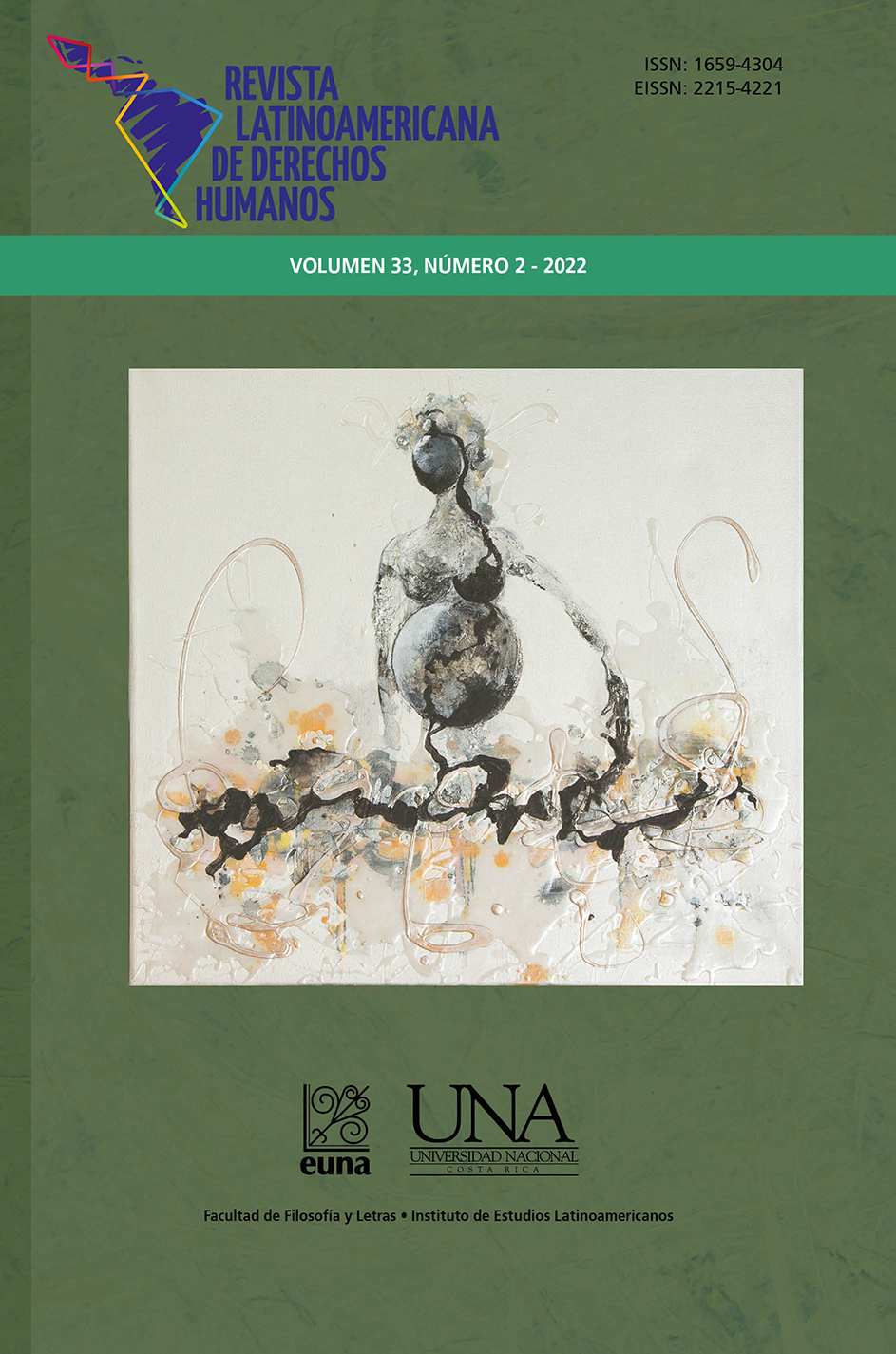The phenomenon of femicide: a systematic review
DOI:
https://doi.org/10.15359/rldh.33-2.6Keywords:
Women's rights, Homicide and human rights, Women and development, Domestic violenceAbstract
The main objectives of this article are to determine the definition of femicide and identify its causes and types. For this, a systematic investigation was carried out where 164 articles were found, of which 123 were disregarded because they did not meet the inclusion criteria, and 41 articles were selected: 26 from Scopus and 15 from Scielo. The data was processed through Microsoft Excel software. As a result of this, the main results obtained were: 81.82% of the selected articles used the murder of women as a frequent term, 33.33% determined that the most frequent cause of femicide is jealousy and 100% of the selected articles identified that the most frequent type of femicide is intimacy. For this reason, it is concluded that there are similar elements in the concepts of femicide analyzed, jealousy is the most frequent cause of femicide and the intimacy and non-intimacy types predominate in the selected articles.
References
Araiza Díaz, A., Vargas Martínez, F. C., & Medécigo Daniel, U. (2020). La tipificación del feminicidio en México. Un diálogo entre argumentos sociológicos y jurídicos. Revista interdisciplinaria de estudios de género de El Colegio de México, 6. doi:https://doi.org/10.24201/reg.v6i0.468
Carrigan, M., & Dawson, M. (2020). Problem representations of femicide/feminicide legislation in Latin America. International Journal for Crime, Justice and Social Democracy, 9(2), 1-19, https://doi.org/10.5204/ijcjsd.v9i2.1354.
Carrillo Kennedy, J. E. (2018). Incidencia de femicidio en el Ecuador y en la provincia del Guayas. Revista Universidad y Sociedad, 10(1), 125-133. http://scielo.sld.cu/pdf/rus/v10n1/2218-3620-rus-10-01-125.pdf.
INEI. (2017). Calificación preliminar de feminicidio. Obtenido de https://www.inei.gob.pe/media/MenuRecursivo/publicaciones_digitales/Est/Lib1532/cap04.pdf
Jobim de Souza, S. M. (2018). O feminicídio e a legislação brasileira. Revista Katálysis, 21(3), 534-543. DOI: http://dx.doi.org/10.1590/1982-02592018v21n3p534.
Maia, C. (2019). Sobre o (des)valor da vida: feminicídio e biopolítica. História, 38, https://doi.org/10.1590/1980-4369e2019052
Montero, C. (2019). A comparative study between the Spanish and Mexican laws regarding femicide | [Estudio comparado entre España y México sobre el marco jurídico aplicable al feminicidio]. Boletín Mexicano de Derecho Comparado, 51(54), 147-170. DOI: 10.22201/iij.24484873e.2019.154.14140.
OMS. (2013). Obtenido de https://apps.who.int/iris/bitstream/handle/10665/98828/WHO_RHR_12.38_spa.pdf?sequence=1
ONU. (2014). ONU MUJERES. Obtenido de https://www.unwomen.org/es/digital-library/publications/2014/8/modelo-de-protocolo-latinoamericano
Valencia, P., & Nateras, M. (2019). Violencia en contra de las mujeres como discriminación en contextos de violencia criminal: el caso del feminicidio en Medellín y el Estado de México. Revista Criminalidad, 62 (1), 59-85. http://www.scielo.org.co/pdf/crim/v62n1/1794-3108-crim-62-01-00059.pdf.
Published
How to Cite
Issue
Section
License
El material que se publica en esta Revista está bajo una licencia “Creative Commons” 3.0 Costa Rica (CC, Reconocimiento-NoComercial-SinObraDerivada 3.0 Costa Rica (CC BY-NC-ND 3.0 CR) . Esto significa que el material publicado en la revista se puede compartir (copiar y distribuir) en cualquier medio o formato considerando que se debe reconocer de forma adecuada la autoría del material y la fuente, no puede utilizarse con fines comerciales y no se aceptan las obras derivadas (remezclar, transformar o crear a partir del material).








